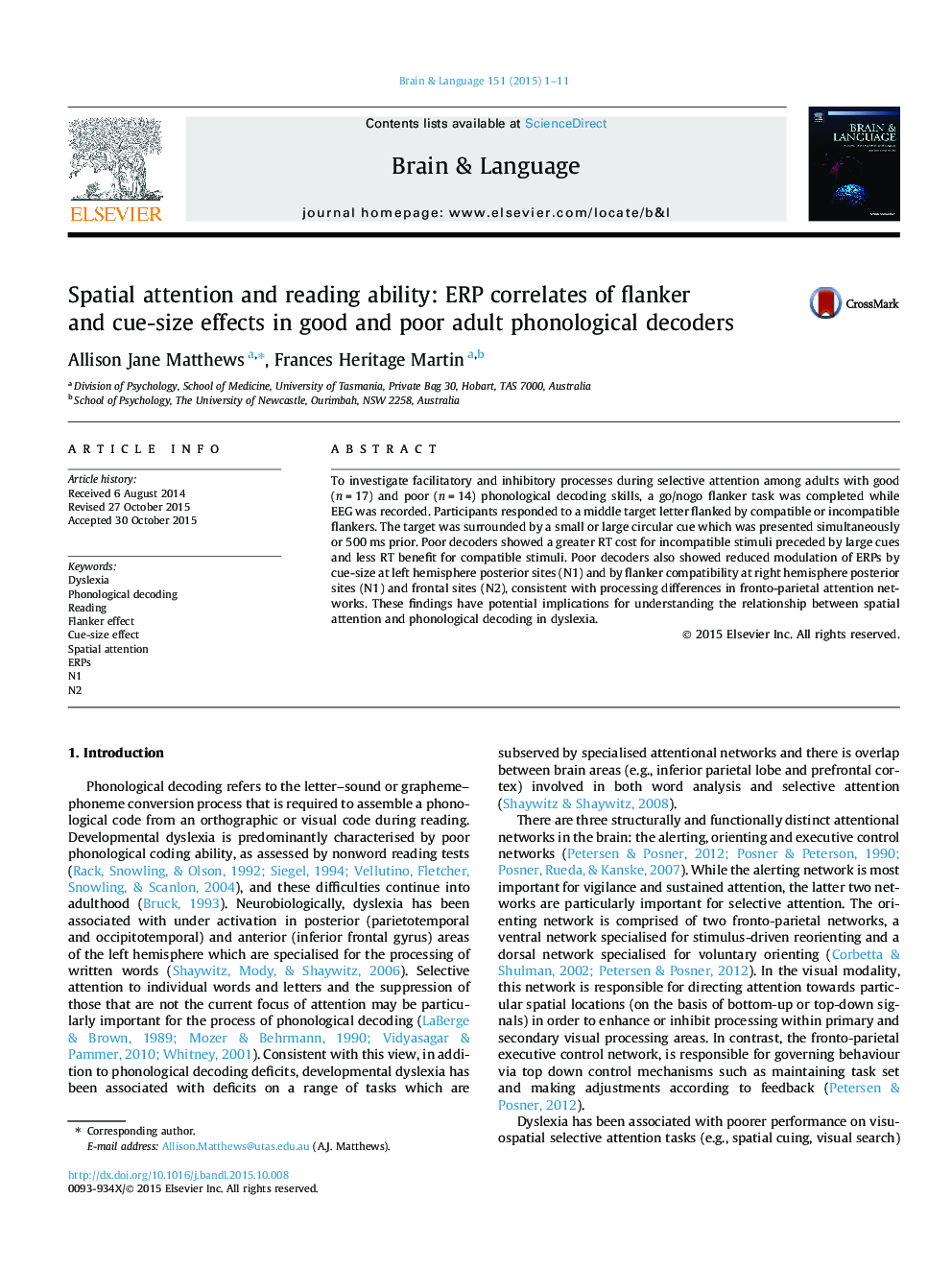| Article ID | Journal | Published Year | Pages | File Type |
|---|---|---|---|---|
| 7283920 | Brain and Language | 2015 | 11 Pages |
Abstract
To investigate facilitatory and inhibitory processes during selective attention among adults with good (n = 17) and poor (n = 14) phonological decoding skills, a go/nogo flanker task was completed while EEG was recorded. Participants responded to a middle target letter flanked by compatible or incompatible flankers. The target was surrounded by a small or large circular cue which was presented simultaneously or 500 ms prior. Poor decoders showed a greater RT cost for incompatible stimuli preceded by large cues and less RT benefit for compatible stimuli. Poor decoders also showed reduced modulation of ERPs by cue-size at left hemisphere posterior sites (N1) and by flanker compatibility at right hemisphere posterior sites (N1) and frontal sites (N2), consistent with processing differences in fronto-parietal attention networks. These findings have potential implications for understanding the relationship between spatial attention and phonological decoding in dyslexia.
Related Topics
Life Sciences
Neuroscience
Biological Psychiatry
Authors
Allison Jane Matthews, Frances Heritage Martin,
